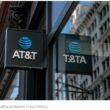A super way to harness the power of social media
When the Super Bowl came to Indianapolis in February, the National Football League had a specific goal: to make this the most socially connected Super Bowl in history.
“They wanted to leverage social media to get the word out about how fantastic the experience was over the two-week period,” said Ty Wooten, an Indianapolis-based 911 training consultant and member of the National Emergency Number Association (NENA) education advisory board, who spoke on the topic yesterday at NENA’s conference in Long Beach, Calif.
Indeed, the Super Bowl is not just a football game—it is a phenomenon that lasts a fortnight and includes a plethora of ancillary activities, such as the Super Bowl Experience and the Super Bowl Village. It also attracts lots and lots of people—as many as 1 million revelers descended upon the city’s downtown section, where everything was being held, as festivities peaked within a few days of the game.
Knowing the NFL’s plan, the city and its public-safety agencies hatched their own clever plan for harnessing the power of social media. A social-media command post was created to monitor all of the postings, tweets and blogs, which exceeded 65 million over a month-long period beginning on Jan.5 and extended five days after the game, Wooten said. A trial run had been conducted at the Big Ten football championship game in Indianapolis the previous November.
The social-media center—housed in a 2800-square-foot space in downtown Indianapolis near Lucas Oil Stadium that had a mile of Ethernet cable running through it, according to Wooten—was manned by 50 volunteers from neighboring colleges, though a few came from as far away as Tennessee. They monitored just about every imaginable social-media platform, including Twitter, Facebook, MySpace and YouTube. They accomplished this daunting task by working with Ball State University to develop algorithms specific to this task and by leveraging off-the-shelf social-media-monitoring software developed by Burlington, Mass.-based Awareness, Inc.
“They tracked not only what was said, but how it was said,” Wooten said.
The algorithms sorted through all of the chatter and divided it into two essential buckets: positive and negative. A color-coding scheme was used to make it easy for volunteers to discern between the two. Meanwhile, the social-media monitoring software kept tabs on 500 keywords that had been identified for this event; the keywords increasingly enlarged the more that tweeters, bloggers and posters used them, which provided volunteers with another important visual cue.
Negative comments were given rapt attention and responses to them were formulated and relayed—but not before they were vetted by a team of attorneys from the city and the NFL. That process didn’t slow down things as much as one might think, Wooten said.
“They had developed, in advance, a variety of pre-determined responses and canned messages,” he said. “So, policies were a key to this effort. They knew in advance who was going to respond, how they would respond and who was going to approve the message.”
The vast majority of the negative comments were benign—complaints about parking and long waits at restaurants topped the list—and there were no major incidents that would have required a public-safety response, according to Wooten.
“They had a few lost kids, and a few drunken people who got separated from their friends, but that was about it,” Wooten said.
Nevertheless, they were prepared for the possibility of a major incident. A dedicated e-mail account was established that was monitored by FBI and local public-safety personnel. If the social-media monitors had uncovered something that they believed required a public-safety response, they would have sent an e-mail to that box to alert authorities.
There actually was one relatively minor event that triggered such an e-mail. The Super Bowl Committee’s website had been hacked on the morning of the game, with the perpetrator adding a pornographic image to the site’s home page. A social monitor discovered a blog post in which the author included a screenshot of the altered home page. Working with the social-media command post, the FBI was able to identify the IP address of the blogger.
“He got a phone call from the FBI telling him to remove the post,” Wooten said. “They told him that, if he didn’t, they were going to come get him—and that someone already was on the way.”
What do you think? Tell us in the comment box below.

















